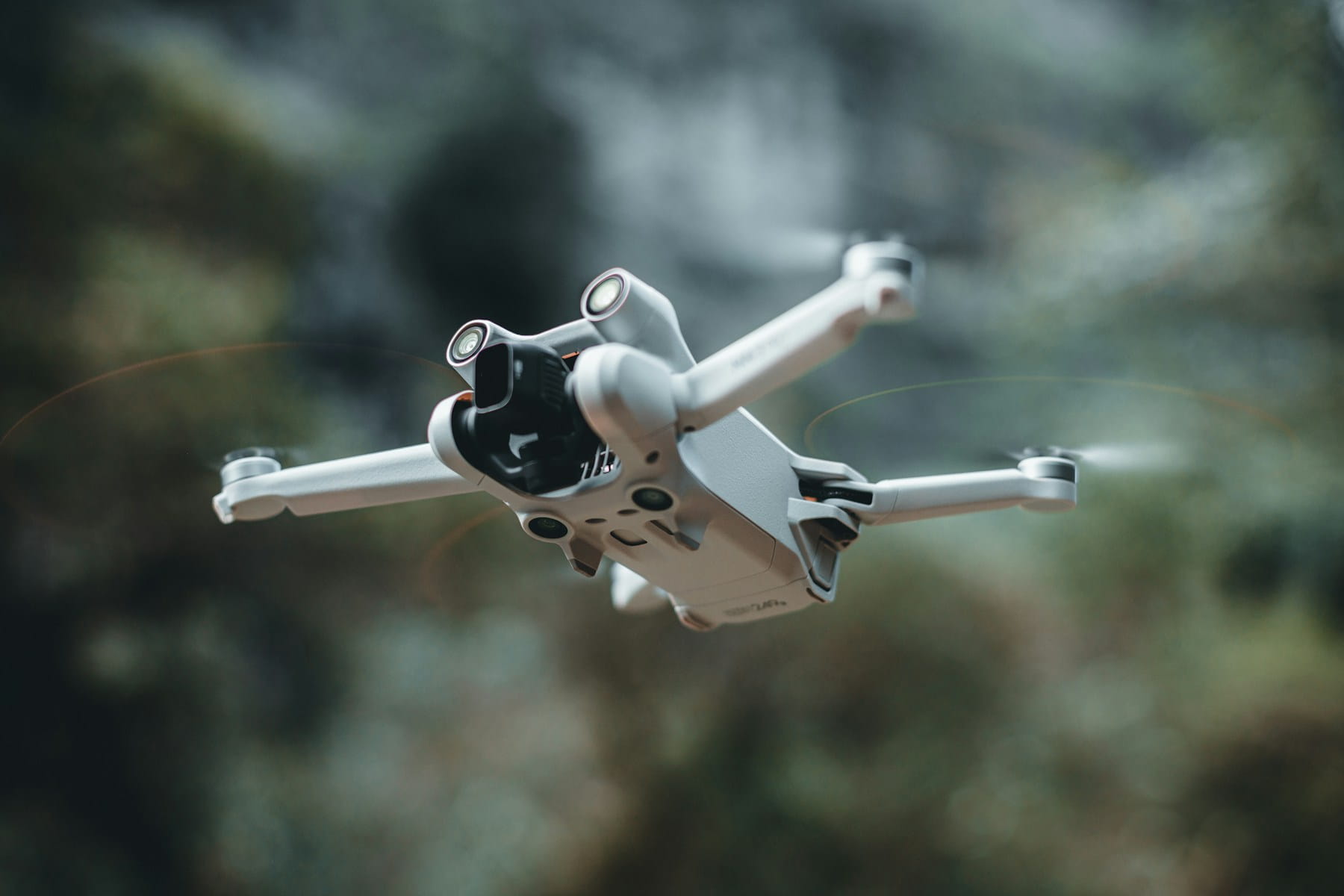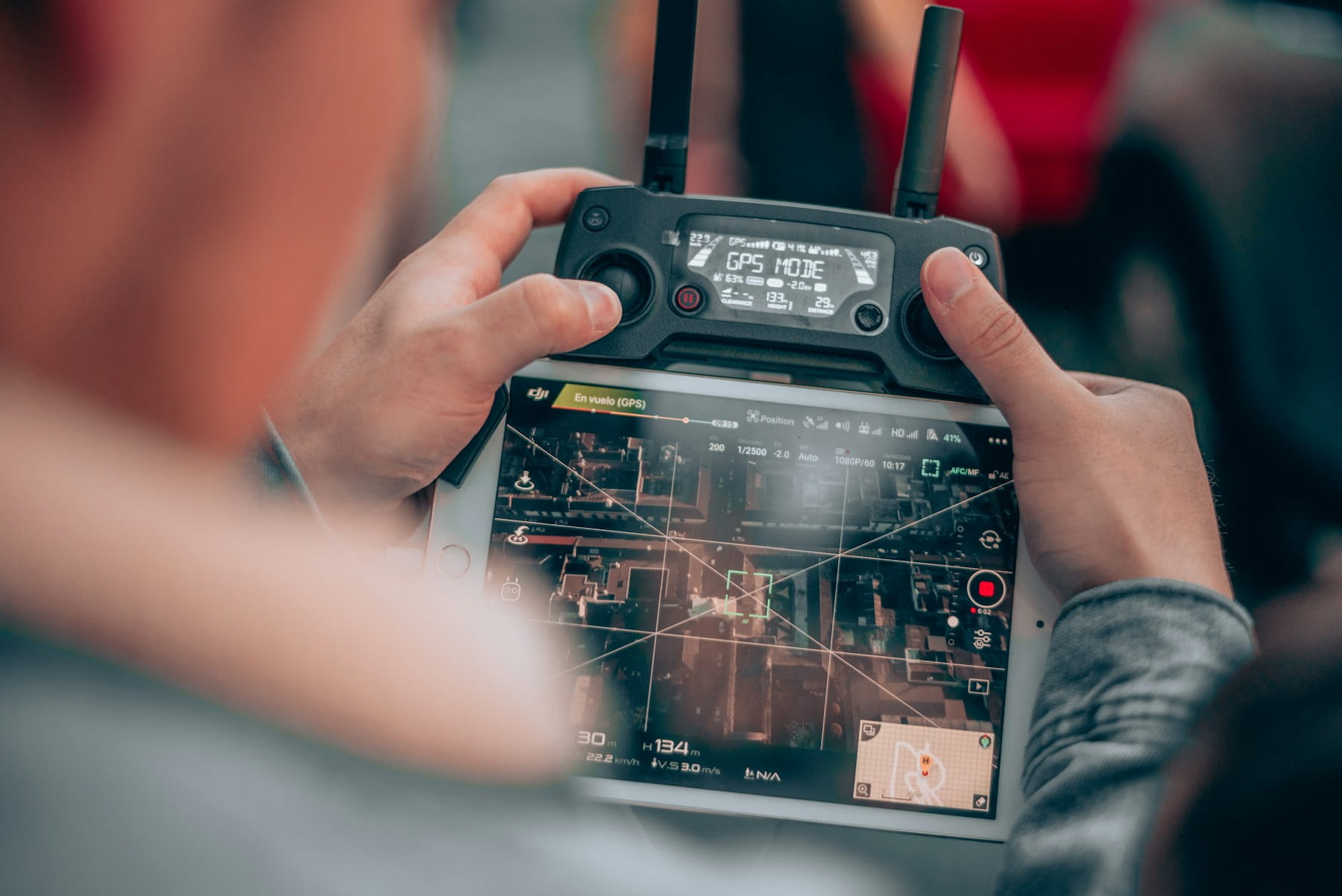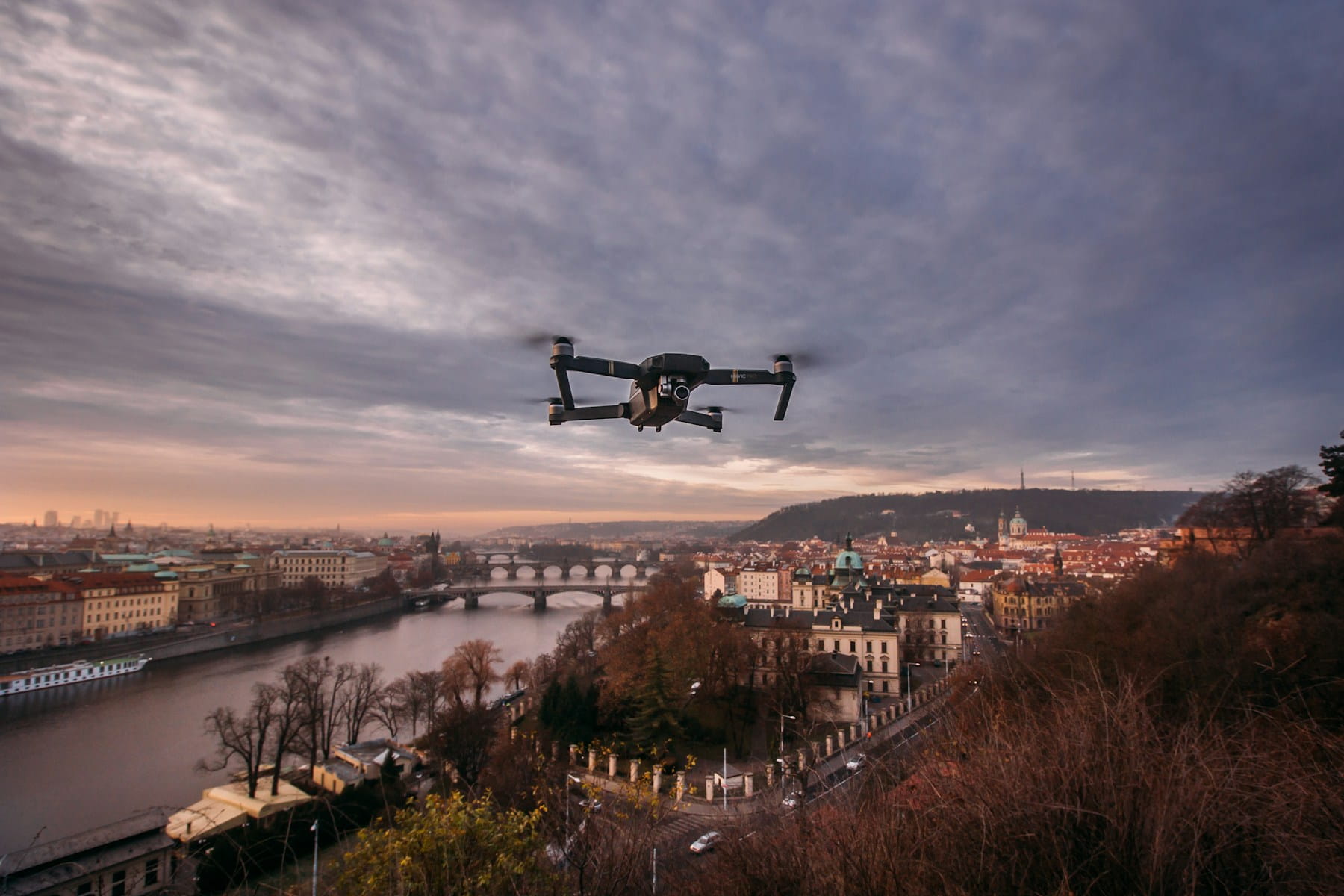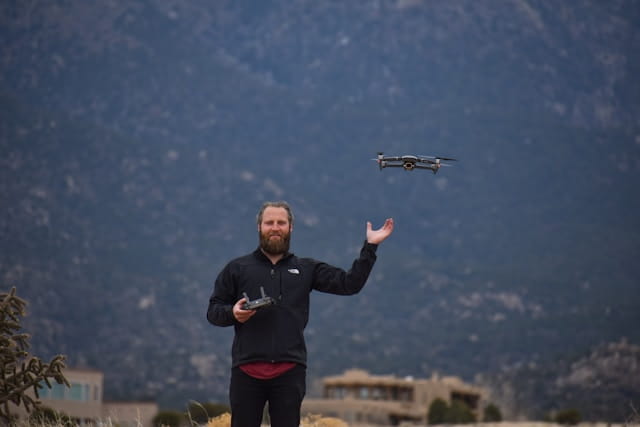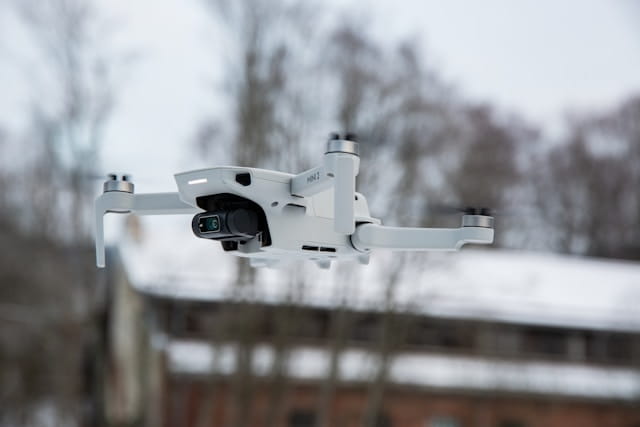What is an FAA Drone License?
An FAA drone license, officially known as the Part 107 Remote Pilot Certificate, is a certification issued by the Federal Aviation Administration that authorizes individuals to operate drones commercially in United States airspace. The certificate demonstrates proficiency in aeronautical knowledge, airspace regulations, and operational safety requirements for unmanned aircraft systems weighing less than 55 pounds.
Operating a drone commercially in United States airspace requires proper certification from the Federal Aviation Administration. The licensing landscape can feel overwhelming at first glance, but understanding the specific requirements and pathways available makes the process much more manageable for aspiring drone pilots.
The FAA has established clear frameworks for different types of drone operations, each with distinct requirements and privileges. Getting the right certification depends on how you plan to use your drone and what type of airspace you'll be operating in.
Table of contents
- Part 107 Remote Pilot Certificate
- Part 61 Private Pilot License pathway
- Recreational drone operations
- Application process and testing
- Medical requirements
- Recurrent training requirements
- Special authorizations and waivers
- International operations
- Cost considerations
- Common mistakes to avoid
- Career opportunities
- Frequently asked questions
- Implementation considerations
- In summary
Part 107 Remote Pilot Certificate
The Part 107 Remote Pilot Certificate represents the primary pathway for commercial drone operations. This certification allows operators to fly drones weighing less than 55 pounds for business purposes within specific operational limitations.
Part 107 operations must occur during daylight hours or civil twilight with appropriate anti-collision lighting. Pilots must maintain visual line of sight with their aircraft at all times and cannot operate over people unless those individuals are directly participating in the operation or located under a covered structure.
Eligibility requirements
Applicants must be at least 16 years old and able to read, speak, write, and understand English. The FAA requires candidates to pass an aeronautical knowledge test covering topics such as airspace classification, weather interpretation, flight operations, and emergency procedures.
No prior flight experience is required for Part 107 certification, making it accessible to individuals without aviation backgrounds. However, candidates with existing pilot certificates can demonstrate their knowledge through alternative methods.
Operational limitations
Part 107 operations come with specific restrictions that pilots must follow. Aircraft cannot exceed 100 mph ground speed or operate higher than 400 feet above ground level. Operations near airports require coordination with air traffic control, and flights over moving vehicles or within certain airspace classifications need special authorization.
The certificate holder must conduct a preflight inspection of the aircraft and ensure all systems are functioning properly before each flight. Weather conditions must be suitable for safe operation, with visibility of at least 3 statute miles from the control station.
Part 61 Private Pilot License pathway
Pilots holding a current Part 61 private pilot license or higher can operate drones under Part 107 without taking the knowledge test. Instead, they complete online recurrent training every 24 months to maintain their remote pilot privileges.
This pathway recognizes that manned aircraft pilots already possess much of the aeronautical knowledge required for safe drone operations. The online training focuses on drone-specific regulations and operational considerations rather than basic aviation principles.
Training requirements
Private pilots must complete an FAA-approved online course covering Part 107 regulations, airspace requirements, and safety protocols specific to unmanned aircraft systems. The training takes approximately 2-3 hours to complete and includes interactive modules and knowledge checks.
After completing the online training, pilots receive a certificate of completion that they submit along with their application for a Part 107 remote pilot certificate. This process typically takes several weeks to complete.
Recreational drone operations
Recreational drone operators don't need an FAA license but must follow specific rules under Part 107 or the Exception for Recreational Flyers. These operations are limited to personal enjoyment and cannot involve any form of compensation.
Recreational pilots must register their drones if they weigh between 0.55 and 55 pounds. The registration process is straightforward and can be completed online through the FAA's DroneZone portal.
Safety guidelines
Even without licensing requirements, recreational operators must follow safety guidelines to protect people and property on the ground. Flying near airports, over crowds, or in restricted airspace requires proper authorization or coordination with relevant authorities.
The FAA recommends that recreational pilots take the Recreational UAS Safety Test (TRUST) to demonstrate their understanding of safety requirements. Many organizations offer this free online training program.
Application process and testing
The Part 107 knowledge test is administered at FAA-approved testing centers nationwide. The exam consists of 60 multiple-choice questions covering aeronautical knowledge areas relevant to drone operations. A score of 70% or higher is required to pass.
Testing appointments can be scheduled online through PSI Services or other authorized testing providers. The exam fee is typically around $175, though prices may vary by location and testing center.
Test preparation
Effective preparation involves studying the FAA's Remote Pilot Study Guide and practicing with sample questions. Many commercial training providers offer comprehensive courses that cover all test topics in detail.
Key study areas include reading sectional charts, interpreting weather reports, understanding airspace classifications, and calculating weight and balance for drone systems. The test also covers emergency procedures and crew resource management principles.
After passing the test
Successful candidates receive a temporary certificate immediately after passing the exam. The permanent plastic certificate arrives by mail within several weeks. Remote pilots must carry their certificate whenever operating commercially and present it upon request by FAA inspectors or law enforcement.
Medical requirements
Part 107 operations don't require a formal medical certificate like manned aircraft operations. However, remote pilots must be physically and mentally capable of safely operating their aircraft.
The FAA uses a self-assessment approach where pilots evaluate their own fitness for flight. Certain medical conditions or medications may affect a pilot's ability to operate safely, and individuals should consult with aviation medical examiners if questions arise.
Vision requirements
Remote pilots must have vision sufficient to see and avoid other aircraft and obstacles. Corrective lenses are acceptable, and the FAA doesn't specify exact visual acuity standards for Part 107 operations.
Color vision deficiencies don't automatically disqualify remote pilots, though certain operations may require the ability to distinguish between different colored lights or chart symbols.
Recurrent training requirements
All Part 107 remote pilots must complete recurrent training every 24 months to maintain their certification. This training can be accomplished by either retaking the knowledge test or completing an online recurrent training course.
The online option is more popular because it's convenient and less expensive than retaking the full knowledge test. The training covers regulatory updates, safety improvements, and accident case studies relevant to drone operations.
Training content
Recurrent training focuses on areas where the FAA has identified common problems or regulatory changes. Recent courses have covered Remote ID requirements, operational risk management, and lessons learned from accident investigations.
Pilots receive a certificate of completion that they must retain as proof of current training. The FAA may request this documentation during inspections or enforcement actions. Maintaining proper records of your pilot flight hours and training certificates is essential for regulatory compliance.
Special authorizations and waivers
Some commercial operations require capabilities beyond standard Part 107 limitations. The FAA provides several authorization mechanisms for these situations, including airspace authorizations and operational waivers.
Low Altitude Authorization and Notification Capability (LAANC) provides near real-time authorization for flights in controlled airspace around airports. This automated system processes most requests within minutes, making it practical for routine commercial operations.
Waiver applications
Operations requiring waivers from Part 107 limitations must demonstrate equivalent levels of safety through alternative methods or procedures. Common waiver requests include flights over people, beyond visual line of sight operations, and nighttime operations without anti-collision lighting.
The waiver application process requires detailed safety analysis and operational procedures documentation. Processing times vary but typically take several months for complex requests. A thorough operation risk assessment is critical for successful waiver applications.
| Authorization Type | Processing Time | Common Uses |
|---|---|---|
| LAANC | Minutes to hours | Airport proximity flights |
| Part 107 Waiver | 90+ days | Operations over people, BVLOS |
| Special Airspace | Varies | Military installations, temporary flight restrictions |
International operations
Remote pilots planning international operations must research and comply with regulations in each country where they intend to operate. Many countries have their own licensing requirements that may not recognize FAA certificates.
Some nations have reciprocity agreements or recognition processes for foreign drone pilots. If you're operating in Europe, you'll need to understand how to get an EU drone license before conducting commercial operations abroad.
Documentation requirements
International operations often require additional documentation such as aircraft registration, insurance certificates, and operational approvals from local aviation authorities. Planning these operations well in advance helps avoid delays and complications.
Customs and import requirements for drone equipment vary significantly between countries. Some nations restrict or prohibit certain types of drone technology, particularly equipment with advanced imaging capabilities.
Cost considerations
Getting an FAA drone license involves several direct costs plus indirect expenses for training and preparation. The knowledge test fee represents just one component of the total investment required.
Test preparation materials range from free FAA publications to comprehensive commercial training programs costing several hundred dollars. Many pilots find that structured training programs improve their chances of passing on the first attempt.
Ongoing expenses
Maintaining Part 107 certification requires recurrent training every 24 months, which adds ongoing costs to commercial operations. Additional authorizations and waivers may also involve fees and consulting expenses.
Insurance coverage is often required for commercial operations and represents a significant ongoing expense. Many clients require proof of liability coverage before awarding contracts to drone service providers.
Common mistakes to avoid
New remote pilots often make mistakes that can result in enforcement actions or safety incidents. Understanding these common pitfalls helps pilots operate more safely and legally while maintaining proper drone compliance.
Operating beyond visual line of sight without proper authorization is one of the most frequent violations. Many pilots underestimate how quickly drones can disappear from sight, especially in certain lighting conditions or weather. Understanding BVLOS requirements is critical before attempting any extended-range operations.
Airspace violations
Flying in controlled airspace without authorization remains a persistent problem despite the availability of LAANC. Some pilots don't realize they need authorization for flights near smaller airports or don't understand temporary flight restriction requirements. Reviewing airspace classifications and understanding no-fly zones prevents these costly mistakes.
Weather-related decisions also cause problems when pilots attempt to operate in conditions beyond their equipment or experience level. Part 107 requires suitable weather conditions, but the regulation doesn't define specific minimums, leaving judgment to individual pilots. Proper flight planning includes thorough weather assessment and conservative decision-making.
Another common mistake involves inadequate record-keeping and documentation. Professional operators must maintain detailed logs of flights, maintenance activities, and training certificates. Using proper software solutions helps systematize these requirements and ensures nothing falls through the cracks.
Career opportunities
The drone industry continues expanding across multiple sectors, creating opportunities for certified remote pilots. Commercial applications range from real estate photography to infrastructure inspection and emergency response support. Understanding where to focus your efforts helps maximize your earning potential.
Many pilots start with basic services like photography and videography before specializing in more technical applications. Advanced operations often require additional training and equipment investments but typically command higher rates. Developing expertise in specific sectors creates competitive advantages.
Market sectors
Construction and engineering firms increasingly rely on drones for surveying, progress monitoring, and safety inspections. These applications often involve regular repeat business and can provide stable income streams for qualified operators. Specializing in construction inspections requires understanding both aerial techniques and construction processes.
Public safety agencies use drones for search and rescue, traffic monitoring, and crime scene documentation. These specialized applications may require additional certifications and security clearances but offer interesting career paths for pilots interested in serving their communities.
Infrastructure inspection represents another growing market where drones provide critical services. From power line inspections to cell tower inspections and wind turbine inspections, specialized inspection services command premium rates. These operations often require advanced piloting skills and industry-specific knowledge.
Agriculture and forestry sectors utilize drones for crop monitoring, spraying, and yield analysis. Forestry inspections help monitor forest health and identify potential issues before they become major problems. These operations often require specialized equipment and agricultural knowledge beyond basic flight skills.
Managing complex operations across multiple sectors requires robust systems for tracking work, maintaining equipment, and ensuring compliance. As your business grows, implementing proper fleet management practices becomes essential for sustainable operations.
Frequently asked questions
How long does it take to get an FAA drone license?
Most applicants can obtain their Part 107 Remote Pilot Certificate within 4-6 weeks. This includes time for test preparation, scheduling and taking the knowledge exam, and processing the application through the FAA. Using drone operations software can help you prepare more efficiently by organizing study materials and tracking your progress.
Do I need a drone license for recreational flying in the US?
No, recreational drone operators in the United States don't need a Part 107 certificate. However, you must register your drone if it weighs more than 0.55 pounds, follow FAA safety guidelines, and complete the TRUST (Recreational UAS Safety Test). For European operations, requirements differ - see our guide on how to get an EU drone license. Our comprehensive guide on what drone license do I need covers the distinctions between recreational and commercial requirements across different regions.
Can I operate my drone at night with a Part 107 certificate?
Yes, Part 107 allows nighttime operations with proper anti-collision lighting visible for at least 3 statute miles. You must also complete additional training on night operations. Proper flight planning becomes even more critical for safe nighttime operations.
How much can I earn as a licensed drone pilot?
Commercial drone pilots earn between $50,000 and $100,000 annually depending on specialization and experience. High-demand sectors like construction inspections, surveying, and infrastructure inspection typically command higher rates.
Implementation considerations
Starting your career as a licensed drone pilot requires more than just passing the Part 107 exam. Successful commercial operators invest time in building practical flight skills, understanding their target market, and establishing business relationships. The certification opens doors, but practical experience and business acumen determine long-term success.
Consider specializing in a specific industry sector rather than offering general drone services. Fields like construction, power line inspections, or cell tower inspections often provide more stable income and opportunities for repeat business. Specialization allows you to develop expertise, command higher rates, and build a reputation within a specific industry.
Building your business also means developing operational systems that ensure compliance with regulations and maintain safety standards. As your operations grow, you'll need to implement procedures for maintenance tracking, flight documentation, and client management. Professional operators treat these systems as essential business infrastructure rather than administrative burdens.
Equipment investment strategies
Your initial equipment choices significantly impact your operational capabilities and market positioning. While consumer-grade drones suffice for basic photography work, specialized applications often require professional-grade equipment with advanced sensors and longer flight times. Balance your initial investment against realistic revenue projections to avoid overextending financially.
Building redundancy into your equipment inventory prevents single points of failure from disrupting client commitments. Many successful operators maintain backup aircraft, batteries, and critical components to ensure they can fulfill obligations even when equipment fails. This approach builds client confidence and protects your reputation.
Building client relationships
Establishing strong client relationships drives sustainable business growth. Focus on understanding client needs, delivering consistent quality, and communicating proactively throughout projects. Many drone service contracts come through referrals from satisfied clients, making reputation management critical for long-term success.
Proper documentation practices strengthen client relationships by demonstrating professionalism and attention to detail. Delivering comprehensive flight reports with well-organized data shows clients you take their projects seriously. This level of service differentiates professional operators from hobbyists trying to make extra income.
In summary
The FAA's Part 107 certification provides a clear pathway for individuals seeking to operate drones commercially in United States airspace. The requirements balance accessibility with safety, allowing new pilots to enter the field while maintaining standards that protect people and property.
Understanding the licensing process, operational limitations, and ongoing requirements sets the foundation for a successful career in commercial drone operations. Whether you're pursuing aerial photography, industrial inspections, or specialized applications, proper certification demonstrates your commitment to professional standards.
The investment in obtaining your FAA drone license opens doors to diverse opportunities across multiple industries. From real estate photography to critical infrastructure inspection, certified pilots play an increasingly important role in how businesses gather data and conduct operations.
Ready to scale your commercial drone operations?
Managing a successful drone business requires more than just flying skills and an FAA license. Professional operators need robust systems for flight planning, maintenance tracking, regulatory compliance, and client management.
DroneBundle provides the complete operational platform for commercial drone pilots and enterprises. Track your flight data, maintain equipment records, and ensure regulatory compliance—all in one centralized platform.
Start your free trial today — no credit card required.
Or book a demo to see how DroneBundle simplifies drone fleet management and mission planning for professional operators.
